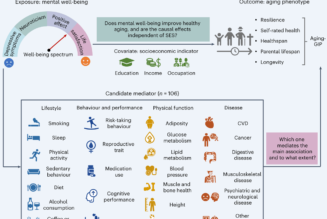
You’ve definitely heard of the Mediterranean diet and the MyPlate method, but what about Harvard University’s Healthy Eating Plate?
Back in 2011, nutrition experts at the Harvard T.H. Chan School of Public Health worked alongside researchers at Harvard Health Publications to compile an eating plan for optimal health.
“In terms of major chronic diseases like prevention of cardiovascular disease, different types of cancers [and] Type 2 diabetes, this way of eating is going to be helpful to prevent those diseases that are common in America, and the world,” says Lilian Cheung, lecturer of nutrition at Harvard’s school of public health.
Now that the topics of longevity and healthy aging are more popular than ever, people are looking for more ways to live longer, and the Harvard diet has found its way back into the news cycle.
What is the ‘Harvard diet’?
The Harvard diet is actually Harvard’s Healthy Eating Plate, and it can be used as a guide for “creating healthy, balanced meals,” according to “The Nutrition Source,” a section of Harvard’s site that provides nutritional information.
For the diet, you should prioritize vegetables and fruits for half of each meal and supplement the other half with whole grains and healthy proteins.
Here’s a thorough breakdown of how to set your plate.
1. Vegetables and fruits should be prominent in most meals (1/2 of your plate)
When plating your vegetables, “aim for color and variety,” and eat a bit more veggies than fruits, the researchers suggest.
Keep in mind that for this diet: “A potato is not a vegetable from a nutrition point of view,” says Cheung.
Why? You may ask. Well, “potatoes almost behave like a refined carbohydrate. It increases your blood sugar,” she adds.
Whole fruits are also important to add to meals, and Cheung especially recommends reaching for them over juice.
2. Add in whole grains (1/4 of your plate)
In comparison to the U.S. Department of Agriculture’s MyPlate method, the Harvard diet specifies the type of grains that you should eat. The plan strongly encourages eating whole grains, as opposed to refined grains.
“Whole grains have much more vitamins and also phytochemicals and minerals, which is much healthier for us and won’t raise [our] blood sugar so fast,” Cheung says.
A few whole grains that you should consider are:
- Oats
- Quinoa
- Barley
- Whole wheat (including whole wheat bread and pasta)
- Brown rice
3. Get some healthy protein (1/4 of your plate)
More than most diets, the Healthy Eating Plate dives into which proteins are healthy for you and which you should limit in your diet.
Some healthy proteins include:
- Fish
- Chicken
- Beans
- Nuts
- Duck
You should aim to limit your red meat consumption, and completely avoid processed meats like bacon and sausage if you can, according to Cheung.
4. Cook with healthy oils (in moderation)
In order to avoid consuming unhealthy trans fats, you’re advised to not cook with partially hydrogenated oils like margarine and certain vegetable oils.
Instead, Cheung recommends reaching for healthier options like:
- Olive
- Canola
- Soy
- Corn
- Sunflower
- Peanut (unless you’re allergic)
5. Go for water, tea and coffee over milk
“We were really deliberate in terms of the drinks,” says Cheung. For years, it was recommended that people should drink three cups of milk each day, she adds.
“We didn’t think that it was the most prudent way to go about it, especially because there are some populations in the U.S. that are lactose intolerant,” says Cheung.
“Even with just the amount of calories from drinking [milk] that way, it would be more preferable to be drinking water, tea or coffee.”
The Harvard diet encourages you to alternate between water, tea and coffee to pair with your meals, especially with little to no sugar.
Additionally, they suggest reducing milk and dairy consumption to one to two servings a day and juice to one small glass per day. You should avoid sugary drinks altogether if possible.
6. Move your body
But what makes the eating plan unique is the disclaimer to stay active, which is almost as prominent as the breakdown of foods and drinks.
“We need to be engaging [for] half an hour a day, or at least five times a week, in vigorous activity,” Cheung notes.
She encourages you to consider engaging in physical activity through brisk walking and fitness classes. Yet, the key is to avoid being sedentary for most of your day.
“We’re all aging, and we should form good habits while we are young,” says Cheung, “so they become part of our habit and our routine.”
DON’T MISS: Want to be smarter and more successful with your money, work & life? Sign up for our new newsletter!
Get CNBC’s free Warren Buffett Guide to Investing, which distills the billionaire’s No. 1 best piece of advice for regular investors, do’s and don’ts, and three key investing principles into a clear and simple guidebook.









